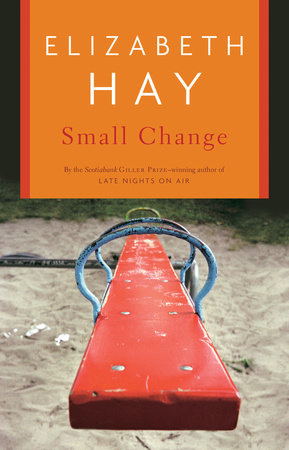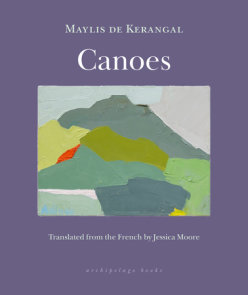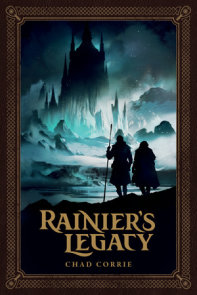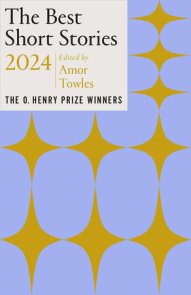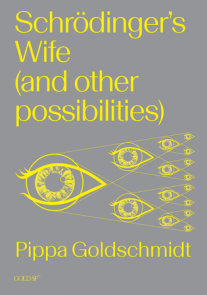READERS GUIDE
Elizabeth Hay’s Small Change was first published in 1997. It propelled Hay into the spotlight of the Canadian literary scene, being shortlisted that year for the Governor General’s Award, the Trillium Award and the Rogers Communications Writers’ Trust Fiction Award. Prior to the publication of Small Change, Hay had published three books – Crossing the Snow Line (1989), a first book of short stories, and two works of creative non-fiction, The Only Snow in Havana (1992) and Captivity Tales: Canadians in New York (1993). But it was Small Change‘s twenty delicately linked short stories, stories that focused on the theme of friendship, love and betrayal, that gained her a wider readership.Beth, Hay’s narrator, looks back at her life and at the friendships and relationships that have been so important to her in the different places that she has lived as an adult and as a child. From her longstanding New York friendship with Maureen to friendships conducted by letter, through long-distance telephone calls or brief encounters in coffee shops, these poignant vignettes create a fascinating portrait of a woman, and a creative writer, that is at once captivating and deeply disturbing.
What makes Small Change such an original book is Hay’s craftsmanship as a writer as well as the originality of her perspective. She has created in these stories a sense of detachment from her subject, reminiscent of writers like Anton Chekhov and Alice Munro, at the same time as inventing an accessibly engaging voice for her narrator that is extraordinarily intimate. Using epigraphs from Noel Coward and Toni Morrison to lead the way, Hay not only guides readers into the midst of what is for many intensely personal and deeply emotional territory but also, and quite deliberately, blurs the line between Beth and Hay herself as author. Small Change is a probing and urgent exploration of the place that friendship plays in our lives. It makes us take another look at ourselves – the emotions and behaviour that get triggered when friendship fails; the anger, pettiness, confusion and regret that such failure stirs.
Introduction
These twenty superbly crafted linked stories navigate the difficult realm of friendship, charting its beginnings and ends, its intimacies and betrayals, its joys and humiliations. A mother learns something of the nature of love from watching her young daughter as she falls in and out of favour with a neighbourhood girl. An intricate story of two women reveals a friendship held together by the steely bonds of passivity. A chance sighting in a library prompts a woman to recall the "unconsummated courtship" she was drawn into by a male colleague. With trenchant insight, uncommon honesty, and dark humour, Elizabeth Hay probes the precarious bonds that exist between friends. The result is an emotionally raw and provocative collection of stories that will resonate with readers long after the final page.Questions and Topics for Discussion
1. After reading Small Change, discuss the role that the epigraphs from Noel Coward and Toni Morrison play in acting as road maps through the terrain that Small Change explores. You might want to discuss, for example, whether the epigraph from Noel Coward is or is not an adequate description of Beth. The quote from Toni Morrison seems to suggest that a degree of play-acting is necessary to create the right kind of impression in conducting our relationships. Discuss the search for a balance between honesty and self-protection in the friendships portrayed in the book.
2. Look at the stories that focus on Beth’s intense friendship with Maureen, including "The Friend" and "Cézanne in a Soft Hat," and compare them with stories that chronicle other friendships – with Carol in "The Fight," Leonard in "Sayonara," and Leah in "Purge Me with Hyssop" – and compare the differences in Beth’s connections with each of these characters. What does Beth expect from friendship? How aware is she of her own failings as a friend?
3. Beth’s friendship with Maureen is the most fully described of her adult friendships, but her attitudes to friendship grow out of her own childhood experiences. Compare the Maureen stories with Beth’s recounting of her daughter’s difficult friendship with Joyce in "Hand Games."
4. One of Beth’s issues with Maureen is her passivity – Maureen, for example, stays with her painter husband, Danny, even after he is clearly unfaithful to her and, even more disturbing, risks her own life by sleeping with him after she suspects he is HIV-positive. What does Beth see in herself that makes her react so strongly to Maureen’s passivity? What does she learn about passivity? And about herself?
5. Hay’s fictions have a very visual feel to them and she has commented in interviews that she’s a great admirer of the Canadian painter David Milne. In "Cézanne and the Soft Hat," she examines the landscapes of the French Post-Impressionist painter in describing the breakdown of his friendship with writer Emile Zola. Look at how Hay describes landscape in this story and discuss the connections that she makes between the detachment of the painter and the detachment of the writer.
6. Beth is a writer who clearly is reworking episodes in her own life into her fiction. Hay said in an interview in the Ottawa Citizen that the "starting points for these stories are autobiographical, and the course they take is fictional." Does the absence of disguise – of an obvious fictional cover – make the stories more compelling?
7. In "Makeup," Beth describes herself as "an emotional bag lady dragging along old friendships, old failings, old makeup and using them to keep myself warm in a shabby sort of way." Does this gathering to herself of old sorrows make her a more or less appealing character?
8. Small Change is structured as a series of linked stories, beginning with the Maureen stories and returning to Maureen in the end. How does the circular and overlapping structure of the book contribute to the underlying theme of friendship revisited.
9. Beth suggests in "Cézanne in a Soft Hat" that men’s friendships with other men are less inclined to be so emotionally fraught as are friendships between women. "They don’t brood so luxuriously about friendships gone wrong." Discuss.
10. In the stories "January Through March" and "Several Losses," Beth looks at the patterns that exist in her friendships and compares them to the seasons. At the end of "Several Losses," Beth asks herself what she has learned and replies, "That I have arrived at middle distance in middle age with not necessarily fewer friends or better friends, but with an overwhelming desire for peaceful friends. And that all of this is temporary, and yet always the same." Discuss the kind of release Beth finds in viewing her friendships and herself as part of the shifting fabric of the physical world.
11. In "A Personal Letter" a character says, "Children don’t appreciate what we come to value so much as adults: consistency in our relationships." Discuss the undercurrent of longing for something more fulfilling among the characters in these stories.
12. The Malahat Review‘s Robert Finley wrote about Small Change that "Hay brings together in her fourth book the revelatory power of narrative, the analytical possibilities of the personal essay and memoir, the investigative discipline of journalism, and the sudden illumination of lyric, and as a result she seems able to pick up everything – everything said, and most of what is only whispered in a gesture or a look between friends." Discuss how you see Hay using different literary genres to explore the concept of friendship.
13. Compare Hay’s idea of friendship with that of other writers. You might want to look at Alice Munro’s short story collection Friend of My Youth, for example.
14. Discuss the style of Hay’s writing. It has been described as both poetic and economical in its attention to the details of emotion and landscape. Is it part of a writer’s job to find words for things that are difficult to talk about?
About this Author
Elizabeth Hay was born in Owen Sound, Ontario. She has worked for CBC Radio in Yellowknife, Winnipeg, and Toronto, lived in Mexico for a time, and for several years called Manhattan her home.Hay’s first novel, A Student of Weather (2000), won the CAA MOSAID Technology Inc. Award for Fiction and the TORGI Award, and was a finalist for The Giller Prize and the Pearson Canada Reader’s Choice Award at The Word on the Street. Her most recent collection of short stories, Small Change (1997), was a finalist for the Governor General’s Award for Fiction, the Trillium Award, and the Rogers Communications Writers’ Trust Fiction Prize. She is also the author of Crossing the Snow Line (stories, 1989); The Only Snow in Havana (non-fiction, 1992); and Captivity Tales: Canadians in New York (non-fiction, 1993). Her stories have been anthologized in Best Canadian Short Stories, The Journey Prize Anthology, and The Oxford Book of Stories by Canadian Women, edited by Rosemary Sullivan. She has won a National Magazine Award Gold Medal for Fiction and a Western Magazine Award for Fiction.
Elizabeth Hay lives in Ottawa, where she is at work on her next novel.







